How to Make the Stock for Beef Stew
This post may contain affiliate links which won't change your price but will share some commission.
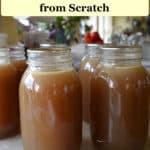
Making homemade beef stock is a great way to add flavor and nutrition to your kitchen. Slow simmering draws out calcium and gelatin from bones and connective tissue, make a rich, healing broth. We'll take you through the process, step by step.
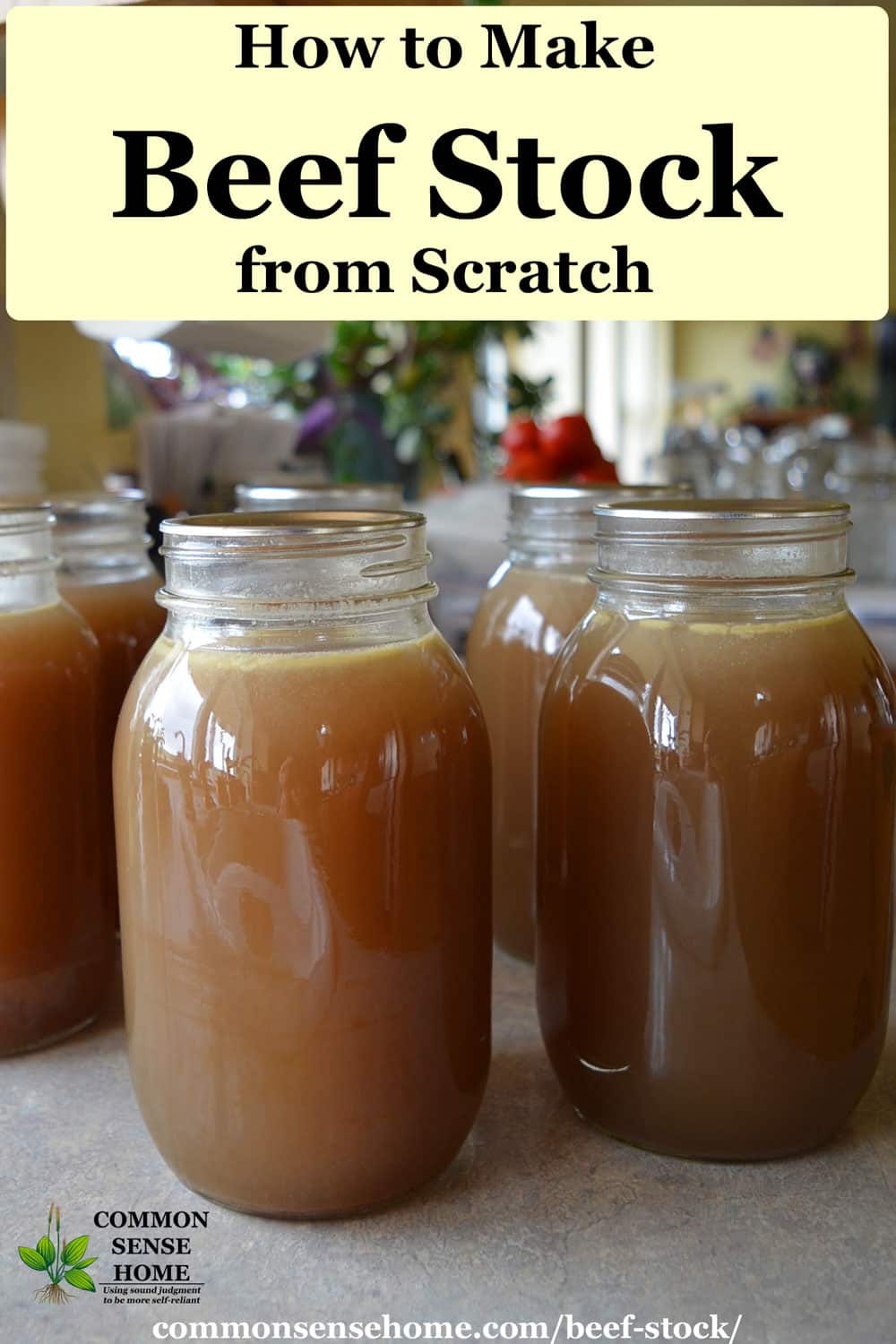
Contents
- Beef Stock Versus Beef Broth
- Roasting Beef Bones for Stock
- Making the Beef Stock
- Storage
- Print Friendly Recipe
- Beef Stock Recipe
- Ingredients
- Instructions
- Notes
- Did you make this recipe?
- More Made From Scratch Recipes
Beef Stock Versus Beef Broth
The words "broth" and "stock" are commonly used interchangeably.
That said, beef stock normally includes slow cooked bones, while beef broth may use only meat, herbs, and veggies.
Both add good flavor to many dishes, but my "go to" is stock. It has a different mouth feel – more smooth and full bodied – from the gelatin in the connective tissue.
Stock is also a great way to use older animals and tougher cuts of meat. Low, slow cooking gently draws out trace minerals in an easy to digest form. Beef, fish and chicken stocks form the foundation of many healing diets.

Roasting Beef Bones for Stock
Before you add your soup bones to the stock pot, I highly recommend roasting them to bring out their meaty goodness. A little browning time enhances the umami element of the stock.
(Think about the flavor of a boiled hot dog versus a grilled hot dog.)
Start with around 5-7 pounds of beef marrow bones and knuckle bones. Coarsely chop 3 onions, 3 carrots, and 3 celery stalks.
Preheat your oven to 400℉. Arrange the bones, onions, carrots, and celery in a large, shallow roasting pan.
Drizzle a little melted butter, lard, or refined coconut oil over your bones and veggies. Sprinkle with a little salt and pepper.
Roast the bones and vegetables for about 40 minutes, turning midway through the cooking. (Alternatively, you can roast at 350℉ for 1-2 hours. I'll do this in winter when we like the extra heat.)
When done roasting, place the bones and vegetables into a large stock pot (12 to 16 quarts).
Pour off any grease in your roasting pan, and add water to cover the bottom. Place the pan on the stove top on low heat, and use a wooden spoon or metal spatula to loosen the browned bits.
Pour the water and browned bits into the stock pot with the bones and veggies.
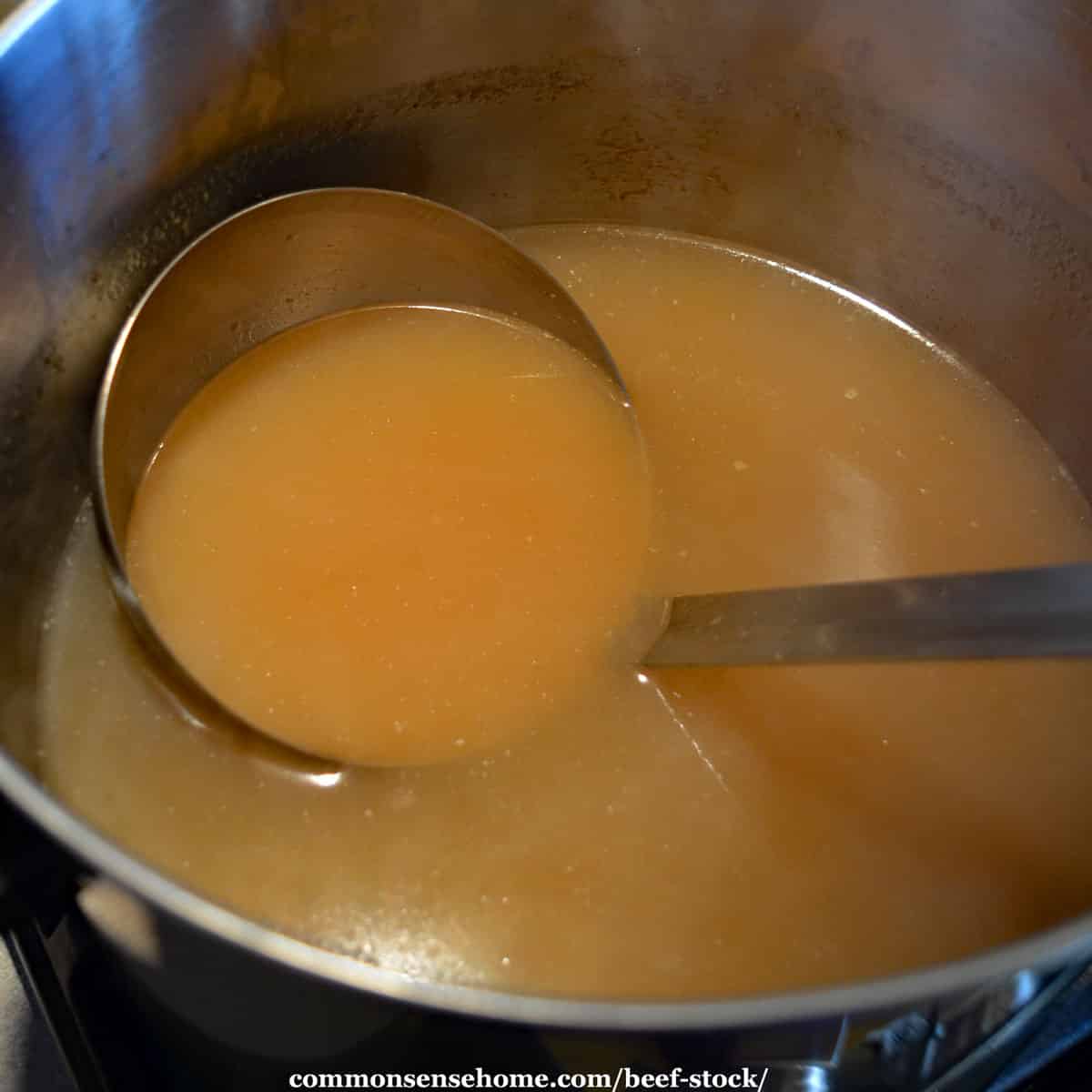
Making the Beef Stock
Once you have your meat, meat drippings and vegetables in the pot, add 4 or more quarts of cold water and herbs. I like to add several bay leaves, garlic cloves, peppercorns, and parsley. You can also add a tablespoon or two of vinegar to help draw the calcium out of the bones.
Bring to a boil, and skim off any scum that rises to the top. Reduce heat and simmer for 12 to 48 hours, adding water if needed to keep the bones covered by 1-2 inches.
I use my smallest burner and a Simmer Mat to keep the beef stock from overheating. (If you don't have a Simmer Mat, I highly recommend them. They are a dream for low heat cooking.)
If I have meaty bones, I'll pause cooking at around 6-8 hours, pick the meat off, and return the bones to the stock pot. Then I use the meat and a portion of the stock for soup or stew. I add more water, as needed, to the stock pot.
At the end of your cooking time, remove the bones and vegetables with tongs or a slotted spoon. Strain your beef stock through a fine mesh strainer.
You can eat the marrow out of the bones, or feed the stock scraps to dogs or chickens.
Storage
Chill your beef stock in the refrigerator. Odds are, you'll see a layer of fat on the top. Leave this in place if you intend to use the stock within a few days, as it forms a protective barrier on the stock.
If you want to freeze or can the stock, skim off the fat before longer storage. Never dump fat down your sink drain, as it will clog the pipes.
To pressure can homemade beef stock, use 1 inch of headspace. Process pints for 20 minutes and quarts for 25 minutes, at ten pounds pressure.
See Altitude Adjustments for Canning if you are over 1000 feet elevation.
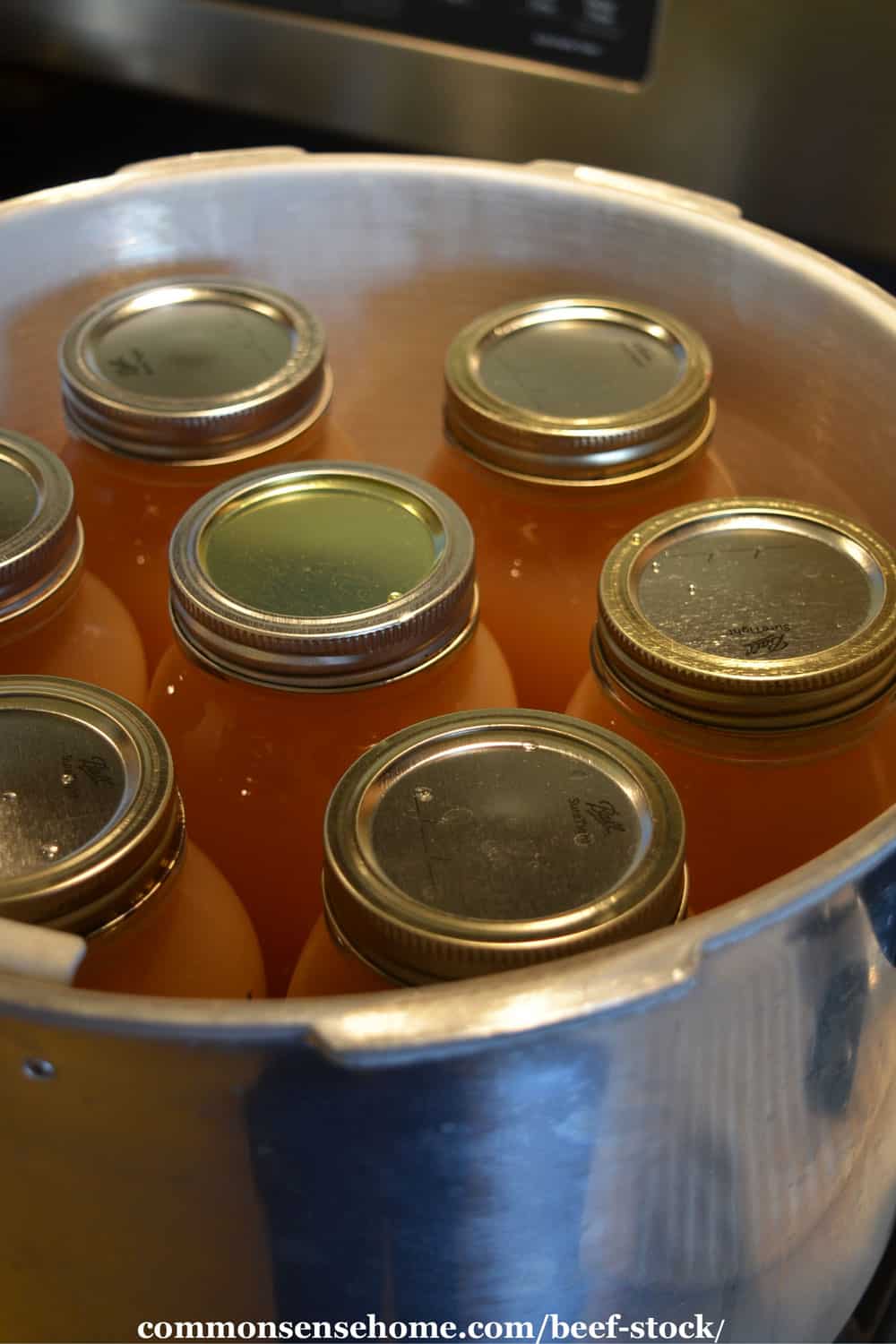
Print Friendly Recipe
Beef Stock Recipe
Making homemade beef stock is a great way to add flavor and nutrition to your kitchen. We'll take you through the process step by step.
- Prep Time: 10 minutes
- Cook Time: 24 hours
- Total Time: 24 hours 10 minutes
- Yield: 16 cups 1x
- 5–7 pounds beef marrow bones
- 3 onions, coarsely chopped
- 3 carrots, coarsely chopped
- 3 celery sticks, coarsely chopped
- 1/4 cup fat of choice – butter, lard, refined coconut oil
- salt and pepper
- 4–6 quarts water
- 3 bay leaves
- 4 garlic cloves
- 1 tablespoon peppercorns
- 1 bunch parsley
- celery tops
- 2 tablespoons vinegar
Roasting the Beef Bones
Start with around 5-7 pounds of beef marrow bones and knuckle bones. Coarsely chop 3 onions, 3 carrots, and 3 celery stalks.
Preheat your oven to 400℉. Arrange the bones, onions, carrots, and celery in a large, shallow roasting pan.
Drizzle a little melted butter, lard, or refined coconut oil over your bones and veggies. Sprinkle with a little salt and pepper.
Roast the bones and vegetables for about 40 minutes, turning midway through the cooking. (Alternatively, you can roast at 350℉ for 1-2 hours. I'll do this in winter when we like the extra heat.)
When done roasting, place the bones and vegetables into a large stock pot (12 to 16 quarts).
Pour off any grease in your roasting pan, and add water to cover the bottom. Place the pan on the stove top on low heat, and use a wooden spoon or metal spatula to loosen the browned bits.
Pour the water and browned bits into the stock pot with the bones and veggies.
Making the Beef Stock
Once you have your meat, meat drippings and vegetables in the pot, add 4 or more quarts of cold water and herbs. I like to add several bay leaves, garlic cloves, peppercorns, and parsley. You can also add a tablespoon or two of vinegar to help draw the calcium out of the bones.
Bring to a boil, and skim off any scum that rises to the top. Reduce heat and simmer for 12 to 48 hours, adding water if needed to keep the bones covered by 1-2 inches.
If I have meaty bones, I'll pause cooking at around 6-8 hours, pick the meat off, and return the bones to the stock pot. Then I use the meat and a portion of the stock for soup or stew. I add more water, as needed, to the stock pot.
At the end of your cooking time, remove the bones and vegetables with tongs or a slotted spoon. Strain your beef stock through a fine mesh strainer.
Storage
Chill your beef stock in the refrigerator. Odds are, you'll see a layer of fat on the top. Leave this in place if you intend to use the stock within a few days, as it forms a protective barrier on the stock.
If you want to freeze or can the stock, skim off the fat before longer storage. Never dump fat down your sink drain, as it will clog the pipes.
To pressure can homemade beef stock, use 1 inch of headspace. Process pints for 20 minutes and quarts for 25 minutes, at ten pounds pressure.
Notes
You can eat the marrow out of the bones, or feed the stock scraps to dogs or chickens.
Keywords: beef, stock, soup, broth
See "How to Can Food at Home" for basic canning instructions.
More Made From Scratch Recipes
We have over 100 real food recipes and kitchen tips on the website, all organized by category on the Common Sense Home Recipes page.
They include:
How to Make Homemade Chicken Broth
Schmaltz – How to Render Chicken Fat, and What to Do With It
How to Cook Beef Tongue
Dutch Oven Pot Roast for the Stove or Campfire Cooking
Easy Ground Beef Jerky
Source: https://commonsensehome.com/beef-stock/
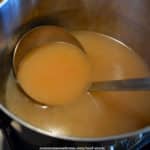
0 Response to "How to Make the Stock for Beef Stew"
Post a Comment